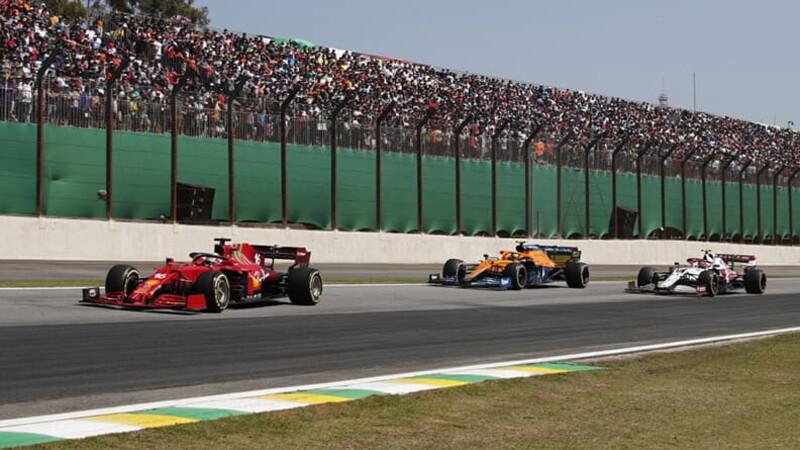F1 GP: a legendary Brazil

What's Brazil like to watch?
The Brazilian Grand Prix has delivered some of the most memorable moments in Formula 1 history: especially at Interlagos. The circuit in the suburbs of Sao Paulo hosted Brazil's first world championship race in 1973 and, after the event spent most of the 1980s in the capital city Rio de Janeiro, a shortened version of the track has been home to the Brazilian GP ever since 1990.
This return coincided with the peak in the career of the local hero Ayrton Senna. To the joy of the passionate crowds, Senna took a famous and long-awaited first home win there in 1991, and another victory two years later.
A move from the beginning of the year to the end for the 2004 season onwards has meant several championships have since been decided in Brazil. The most memorable decider of all came in 2008, when Lewis Hamilton made a final-corner overtake to win his first world title and deny Brazil's Felipe Massa, who had by then already won the race. As it did on that day, rain often plays a part in creating entertaining races at Interlagos (which literally means ‘between the lakes') but even in the dry it's a track that can be great for wheel-to-wheel racing.

What's Brazil like to drive?
Some drivers have described the tight and twisty Interlagos track, with its ups and downs and tightly-packed grandstands filled with exuberant fans, as feeling almost claustrophobically intense. But in truth nobody has time to notice, as Interlagos is a short and sharp rollercoaster that occupies every nanosecond of concentration. It's an old-school track that doesn't forgive mistakes, and just occasionally it's subject to the sort of freak weather that makes negotiating its tortuous turns an almost impossible task. Interlagos is a high-downforce circuit that puts the emphasis on aerodynamic grip during the medium and high speed corners, while in slower corners the car relies on mechanical grip from the tyres.
There's plenty of scope for overtaking: the long run uphill, through a left kink and over the start finish line, leads into a good overtaking spot right at turn 1. If a driver is brave enough to stay on the outside he can try and fight back immediately as the cars twist through the Senna Esses: one of the most spectacular areas of the track. Turn 4 is another overtaking opportunity, along with Turns 8 and 12. Wherever you look, there's action: both in the car and out of it. Physically and emotionally, it's an exhausting track to drive.

What's Brazil like visit?
Sao Paulo is one of the most densely-populated cities in Brazil, and it will be forever linked with motorsport thanks to Ayrton Senna, who was born there and drove his first races at Interlagos. The area directly around the circuit is best visited only at a safe distance, as it's close to one of the city's well-known favelas. But there's plenty to safely see in the rest of Sao Paulo, including the city's well-known parks and art galleries.
The Jardim Botanico provides a welcome break from the chaos and the Pinacoteca do Estado de Sao Paulo has an enviable collection of international art. As well as Formula 1, the other national sport is football, so be sure to check out Sao Paulo's football museum as well as catching a football match if you can, in the vast Allianz stadium.
Brazil is of course famous for its coastline and beach culture, so you're never far from the sea. There are plenty of excursions to nearby coastal resorts that enable you to catch the uniquely Brazilian maritime vibe for yourself. And no visit to Brazil would be complete without an evening in a churrascaria: a traditional meat roastery. A picanha steak is one of the finest things you can eat anywhere in the world, especially when preceded by a potent caipirinha. Sao Paulo also has a huge Japanese population, which makes Brazilian-Japanese fusion food a local speciality – odd as that may sound.
For a more reflective moment, you can visit the Morumbi cemetery, which is Senna's final resting place. It's largely thanks to him that such a legend has grown up around Sao Paulo, Interlagos, and the Brazilian Grand Prix.




